Case Studies
Behind the scenes of some of my life's work...

-
A social network for the people, by the people
Designing a more decentralized and vibrant Twitter through Developer Innovation and Algorithmic Choice
I spent nearly 5 years as a lead designer at Twitter and during that time I led two major projects. The most recent one was designing a way that third parties could contribute features and custom timelines to Twitter through advancements to the Twitter API and new surfaces within the Twitter app. I spent 2 years as a founding lead on this project. It was similar to an early vision of Blue Sky but from within the Twitter. You can read about it here: Twitter is testing custom timelines, and first one is about The Bachelorette Before that project I led the rebranding and complete redesign of developer.twitter.com including the Twitter developer portal, a web application where hundreds of thousands of developers, businesses and academics got and managed access to the Twitter API so they could learn about and contribute to the public conversation.
Please reach out to me directly for more details about my work at Twitter.


-
Ujoin is the startup that I helped found and is one of my most fulfilling experience to date of designing and building something that I truly felt was making the world a better place.
-
The Problem Space
When a legislator votes on a new bill there are two forces acting to sway their vote: money (lobbyists, donors, interest groups) and public opinion. If the public opinion is not heard strongly enough, the money will win their vote. Ujoin is a tool to help nonprofits and motivated citizens influence legislators to vote for or against the passage of laws on a state or federal level.
This space is fraught with problems and opportunity. The process of passing new laws is purposefully complicated and obfuscated by those who would wish to keep public opinion out of the process. This alone keeps most people from understanding where and how they can make an impact. There is also the problem of motivation. Most citizens simply don’t engage in civic activism because they feel powerless, confused or both. Nonprofit advocacy groups have the motivation and desire to influence legislators but lack the tools to leverage their resources to the maximum effect.
-
My Role
I joined Ujoin as a founding partner and head of design and technology when it was one year old. We scrapped the existing application due to a terrible code base and started from scratch. I was in charge of implementing and expanding the CEO’s vision into the product, doing user research, creating branding, creating all UI/UX designs from end to end, doing project management and making all technology and execution-related decisions. I also managed a team of 3-5 developers worldwide to build out the project.


-
The Vision
The vision for Ujoin is targeted at two populations: nonprofit advocacy groups and the general public. The vision for nonprofits is to give them a powerful tool to exponentially increase their impact by leveraging open government data and powerful design to simplify the process of activating their followers. Instead of spending hours and hours tracking down which committee a bill is going through, when, who sits on that committee and then making call, email and other campaigns to sway the opinion of those committee members they can do it in minutes with our tools. Ujoin is an application that proactively guides them through whole life of a bill and suggests actions to them along the way rather than them sludging through a mess of constant research and difficult tools to manage their campaigns. For the public the vision for Ujoin is to turn advocacy into a process that is filled with satisfaction and empowerment. What if we could use the same principles of designing a desire engine that are employed by sites such as Facebook and Instagram to make civic engagement as rewarding and addictive as other social media applications?


-
Solutions
How many months does it take to draw a line?
After months and months of research and ideation we settled on the Bill Timeline as the driving design component of our application. While this seems simple and obvious we had actually never seen it before in advocacy software. A person can easily look up any state or federal bill and add it to their campaign as a interactive Bill Timeline. Each committee stop is highlighted as well as bill revisions, sponsors, committee votes, decisions and next steps. From this simple concept we were able to allow nonprofits to tell the story of a bill.
Using the power and simplicity of the Bill Timeline, nonprofits could set up and even automate important battles along the way. It breaks down something as complex as passing a law into manageable pieces and actions. It empowers micro-actions like getting 50 emails to a legislator the day before a vote - something which can actually sway their vote and the course of a whole law.


-
Utilizing open government data
The government is required to post public data on every bill, committee hearing date, details, votes, legislators present and bill versions. This does not mean that data is posted in any way that is actually usable or readable. We pulled this data in on our backend, cleaned it up and made it simple for the nonprofits to use. For example, they could create a campaign targeting every legislator voting on a bill in its next step with one or two clicks. They can also instantly access all relevant information about those legislators. This cuts down immensely on resources to run campaigns.
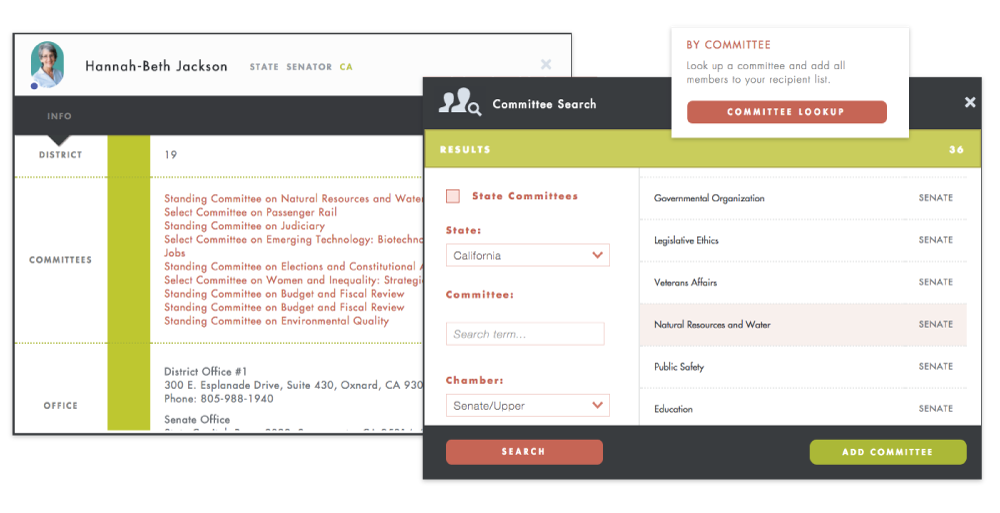
-
Kickstarter for Bills
Why is Kickstarter so fun? It’s full of thousands of stories and you can be a part of those stories. You get to see if your favorite ideas are succeeding and join in to help them thrive if you want. We aimed to create that same feeling for bills. To show people a clear vision of which bills are winning or losing and give them the ability to join in and be a part of the story. To feel all the small wins along the way that create a positive feedback cycle with civic engagement and eventually leads to a more engaged public.
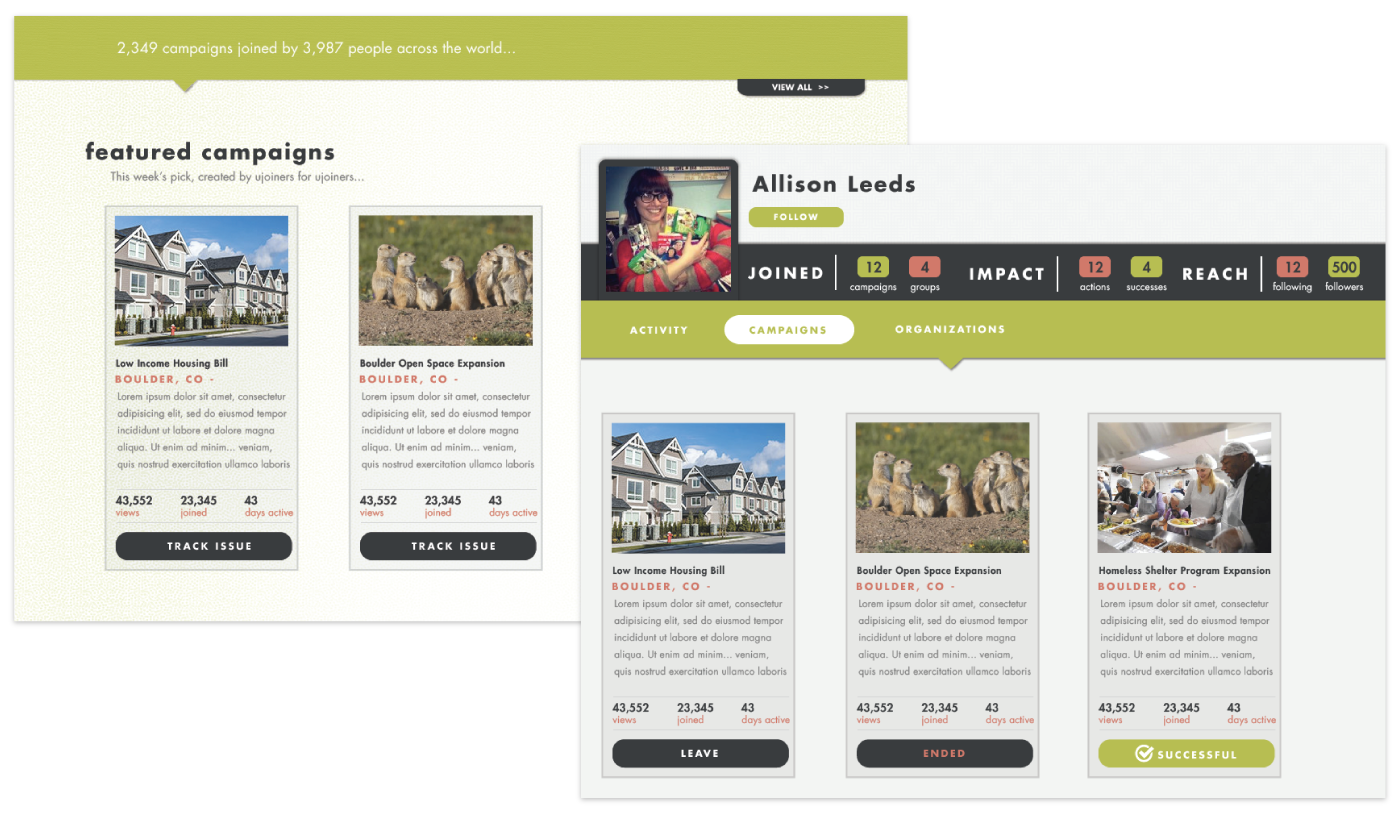
-
Results
While I've stepped down from my active role on the team I am still an advisor and board memeber. Ujoin is growing steadily. It's had strong year over year revenue growth and last year it posted a 144% increase in revenue from the previous year.

-
One of the highlights and great honors of my career was designing and implementing a company-wide review of the app development and design process at LEGO headquarters in Denmark.
-
When I was at LEGO working on a small project doing user testing for the first ever app for LEGO building instructions I recognized a few things that inspired me to pursue a deeper relationship with them. Firstly - I was blown away by the humility of all the people working there and the intense sincerity with which they desired to create the highest quality product possible. Second was that, while they are some of the best in the world at designing physical products, their app design and development efforts were fledgling and significantly behind the industry standards. Before finishing my user testing work I agreed with the senior director of product design at LEGO to come back and conduct a company-wide audit of the app development and design process that would be half investigation and half education and advisory.
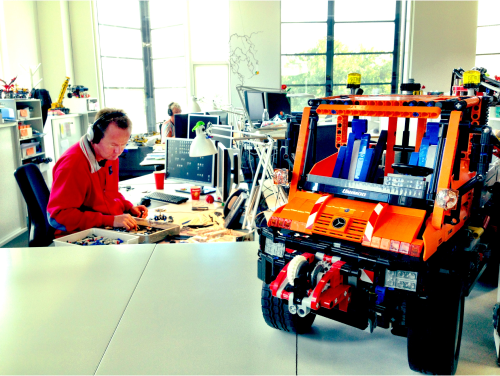
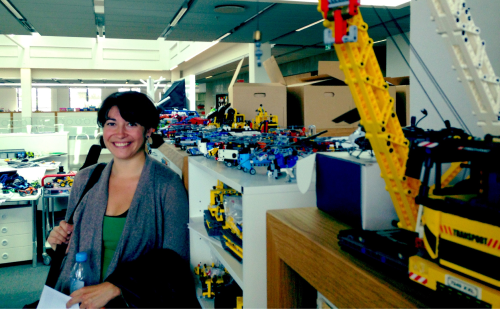
-
Investigation
I conducted my investigation into LEGO by holding deep dives with each department ranging from LEGO Education, to the hardware team, skunk works team, instruction design team and some specific product lines such as Technic and Minecraft. With each team I’d sit down with the heads of department and other key team members and we’d discuss what kinds of applications they were building and how, and also what challenges they were facing. I would facilitate problem solving discussions on how they may tackle some of their more immediate challenges and advise them on best practices or ideas that they might be unaware of. I’d also tour the department and ask questions about the relationship between the physical products and the apps.

-
Education
The intelligent minds at LEGO were craving more knowledge on app development and were quick and excited to pick up on new ideas. For each team deep dive, I would tailor a one or two hour lesson on UX issues related specifically to their area of work. On top of my department sessions, I gave two additional lectures on UX Design while there - one an open invitation to all employees which was attended by about 80 employees and one a smaller session attended by about 15 senior department heads and VPs from across the company. After my 80 person lecture a developer came up and hugged me and thanked my for saying what I did about the importance of empowering and including developers in the decision making process. It was one of my favorite moments of my career.

-
Results
The result of my audit was a series of suggestions to LEGO that ranged from hiring more software designers and developers to creating a centralized team to own LEGO apps and work with each team to create their apps. I worked with the senior director of design and the senior director of technology to come up with a plan for a LEGO platform for app development that would include design patterns, code guidelines and libraries and a centralized database that would tie all the apps together.
The leaders at LEGO had this to say about my work:
"It's amazing how much you've been able to uncover about our company in such a small amount of time that many of us here at LEGO don't even understand fully."
Torsten Bjorn, Senior Director of Product Design, LEGO
“Your insight is like a light in the fog.”
Frede Graversen, Senior Director of Product Technology, LEGO

-
AirPair was an ambitious YCombinator startup building a marketplace and platform for micro-consulting with high end developers.
-
The Problem Space
In most skill based marketplaces like 99 Designs or Upwork, the competition for jobs drives the hourly rates down to levels that are not attractive to top designers and developers. AirPair sought to build a high end marketplace where experts could get paid $100-$300/hr for high impact consulting sessions. Clients who couldn’t afford to have these kind of resources on staff could still have them on hand for advising, teaching & review. The design challenge was to sell the value of these experts to clients who had never met them and create a seamless system for booking and reviewing recurring sessions with experts.
-
My Role
When I started work with Airpair they had a very basic and crude beta product that was already creating value and happy customers. I was in charge of all branding, UI/UX design and visual design to take the product to its version 1.0 release. I worked directly with the CEO on a daily basis to iterate on the current product and designs and launch features in an agile process.

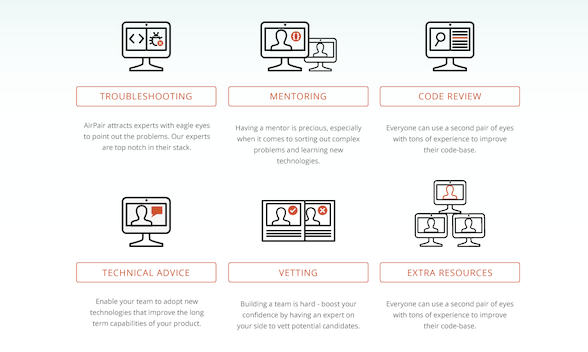
-
Solutions
Dashboards and Interactions
We designed and built out a variety of features for customers and experts including scheduling calls, managing payments, reviewing past sessions, a chat feature and seeking new experts.
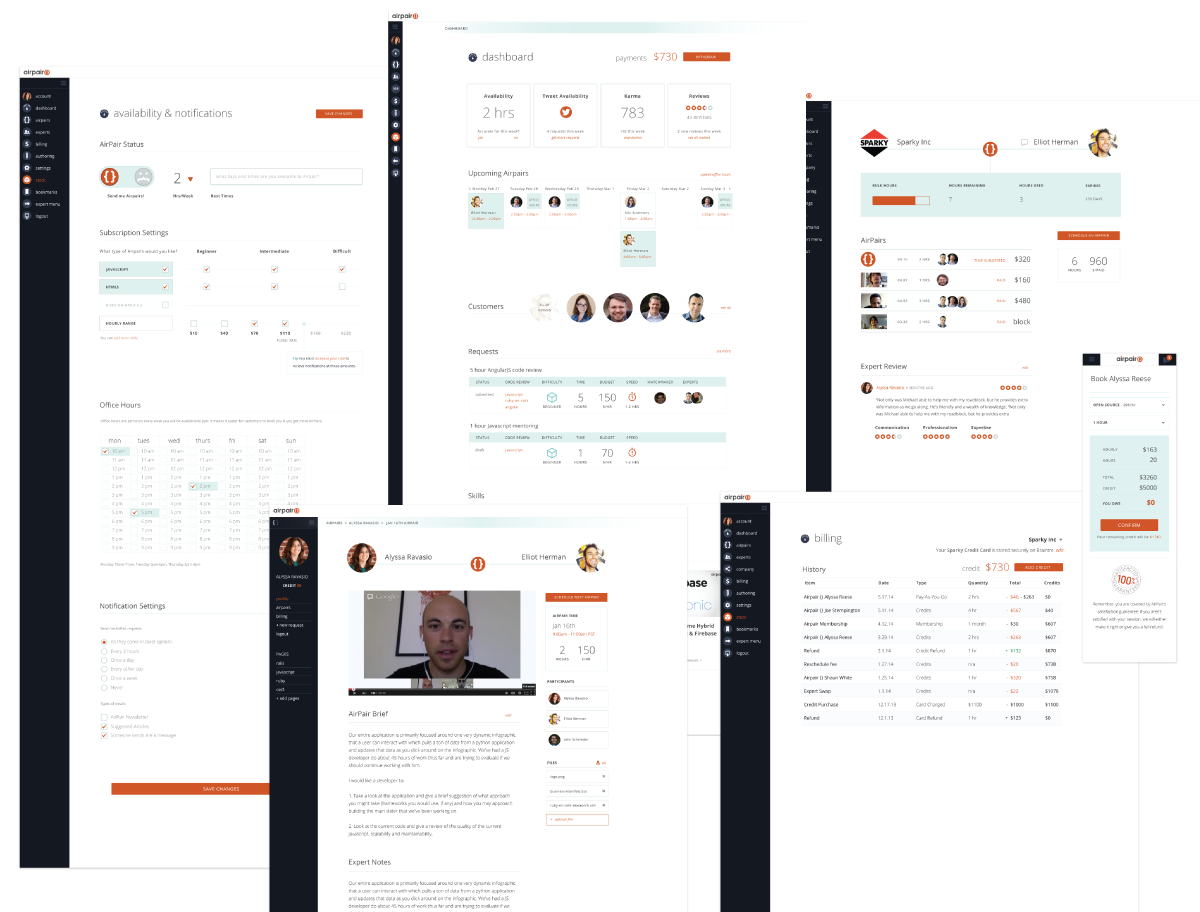
-
Expert Profiles
We created trust of our experts with our early adopters by choosing experts with strong social presence and allowing them to publish articles on the platform. As expert’s engagement with the platform grew, we tracked and summarized reviews and metrics of their interactions in order to build another layer of trust of their reliability, skill sets and value.

-
Knowledge communities
In order to draw more customers to our site and encourage the continual engagement of high quality developers we focused on building knowledge communities around the most popular languages and tools in tech such as Angular, Node, React, Rails and more.

-
Publishing Platform
One of the most exciting additions to the platform that we built was a collaborative publishing engine. This served to bring thousands of potential customers to the site and helped experts showcase their knowledge and capabilities. We wanted to encourage high quality articles so we integrated GitHub and designed the capability for other experts to comment on articles and suggest changes in the editing stage through the Github forking and pull request tools most developers already know and love. Only articles endorsed by three or more experts were published. It’s the closest thing I’ve seen to peer review in writing articles for developers and produced some amazing quality content.

-
Results
AirPair had hundreds of happy customers and experts using the site we designed and built. They ultimately discovered they could not make enough overhead on micro-consulting and were making much more selling advertising on the article pages so pivoted their focus to the authoring and publishing platforms.